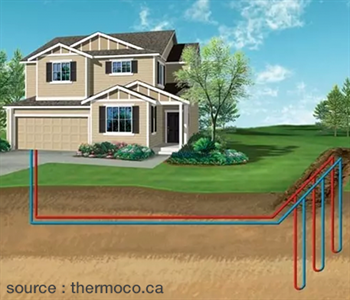
Did you choose to go with geothermal heating, and now you find yourself deciding between horizontal or vertical sensors? Both recover heat from the earth provided by the sun, the only difference is one does it from the surface and the other from the subsurface. In this article, we will explain the advantages and disadvantages for each method.
Trenches are dug 6 feet (1.8m) deep, into which a network of ducts pass. A coolant, the combination of water and antifreeze, circulates inside the ducts. This is all connected to a heat pump that extracts energy from the ground.
Horizontal loop systems are less efficient than vertical loop systems because, given the depth, soil temperature is influenced by surface temperature. In addition, this system requires nothing to be built over the ground. Finally, the initial investment is quite substantial, although it is profitable in the long term.
As the heat is taken deeper than the horizontal sensor method, the temperature is higher. It increases from 2-4 Co every 100m. Of all the geothermal systems, it is the one most used in a proportion of 82.9%.
For this type, holes with a diameter of 13cm and a depth of 150m are drilled and made to install a U-Shaped loop of high density polyethylene. This is filled with a heat transfer fluid, generally propylene glycol. The loop is also immersed in a grout, such as bentonite, which allows better transmission of heat.
The costs of its implantation are very high, sometimes more than the horizontal sensor system, but the return on investment is profitable in the long term.
In short, the two geothermal systems provide a real long-term advantage over how to heat. If you are starting a geothermal heating project, it is important to seek the advice of an expert on the subject. Plastech Plus offers all the drilling and geothermal products required, contact us today!